Pruning Salvias: How To Prune 3 Different Types of Salvias
Salvias are very popular garden plants. Here are tips for pruning salvias (3 different types) in fall or spring to keep them healthy, in good form, and blooming like crazy.
Salvias are popular all the world over. They’re so versatile because they can comfortably fit into many styles of gardens from old-fashioned and cottage right up to modern and simplistic. Pruning Salvias is important to do because it keeps the plants healthy and looking good, and most importantly, encourages flowering.
I first learned all about perennial salvias in the San Francisco Bay Area where I worked as a professional gardener for over 19 years. The nursery where I worked in Berkeley sold many different species and varieties of them so in between the deluge of customers, it was fun to peruse the salvia section.
They grow all over the United States as well as in other countries. Whether you do the big pruning in spring or fall depends on your climate zone and the type of salvia.
I grew up in New England and my dad always did a light pruning of two or three of our winter hardy salvias in the fall. He cleaned them up and put mulch over them as winter protection. The bigger pruning came in the spring. Check with your local garden center or extension office to see what is recommended in your area.
This post shares what I know about pruning the two most popular types of perennial salvias which you probably have in your own garden. I also mention a third type of salvia that you may not be familiar with.
By the way, what I’m talking about here is the big cutbacks; not the ongoing deadheading you do in summer. Speaking of deadheading your Salvias, this is always a good thing to do throughout the season to keep those blooms coming on.
Note: This had been previously published on 4/6/2016. It was updated on 8/6/2020 & then again on 1/7/2023.
How to Prune Salvias
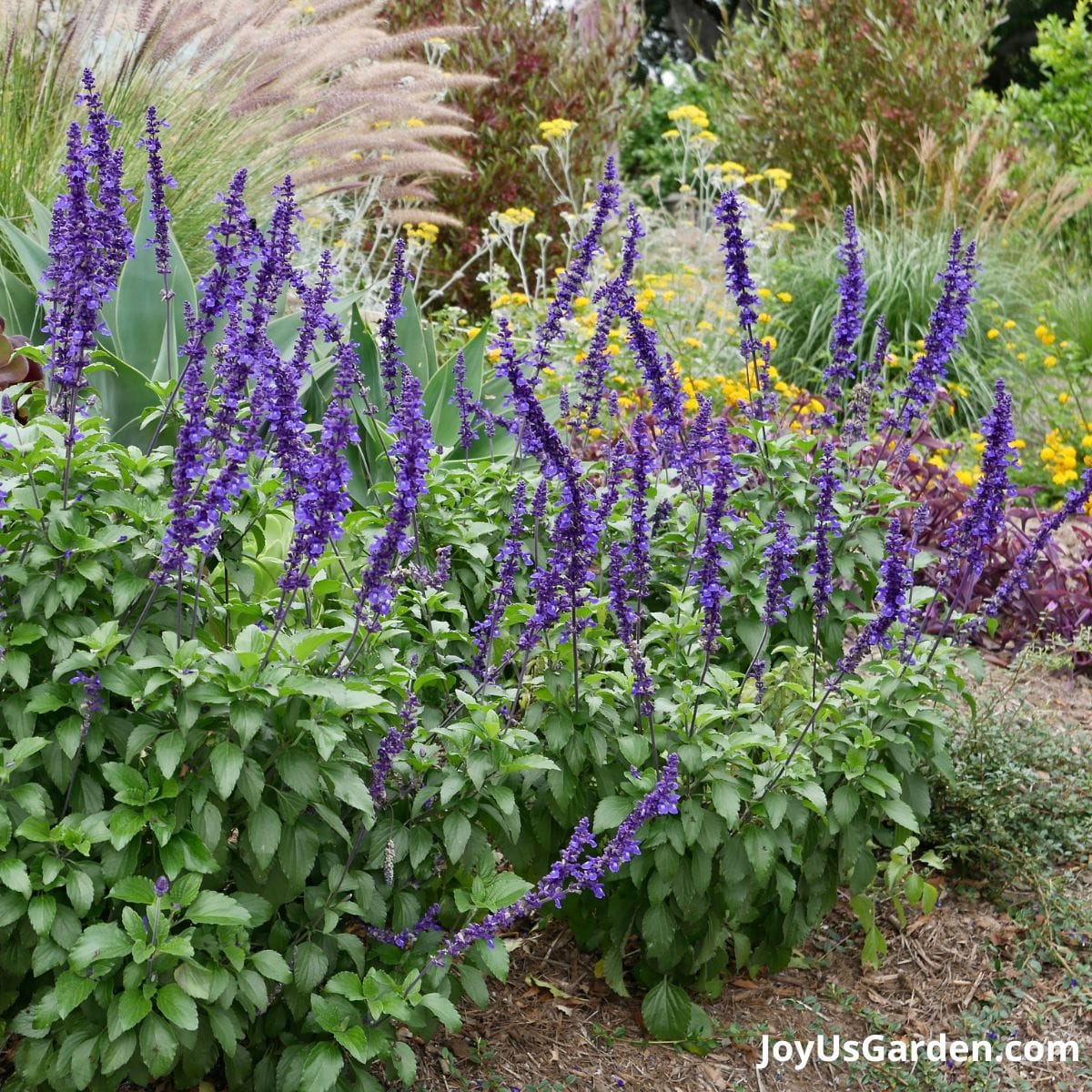
Salvias grow well in California (where I lived for 30 years) because the Mediterranean climate with mild winters suits them to a tee. They’re part of the mint family and are loved for their wide range of flower colors and types as well as their long bloom time. It’s an added bonus that their nonthirsty ways are so appropriate for the water-starved Western US.
I now live in Arizona where we’re in the midst of a drought too. You don’t see as many salvias in Tucson because the intense summer heat and sun are a bit much for them. The ones planted sheltered from the intense afternoon summer sun do better.
Here are pruning and trimming tips for 3 different types of salvia plants which you can do in fall or spring. Here I’ll be talking about pruning salvias in coastal California. You can tweak the process for your climate zone if they’re perennials where you live.
There’s a long-standing debate of sorts about giving salvias their big pruning in fall vs spring. It’s simply a matter of preference.
I go back and forth on this topic but these days I’m more of a proponent of fall/winter pruning. I sometimes find it necessary to do a light “clean up” pruning in early spring too.
There is lots of year-round interest in coastal California gardens so that’s why I prefer to do it in mid to late fall. This way the plant looks better over the winter months and the growth is nice and fresh earlier on in spring.
If you’re in a colder climate, just make sure to do any pruning in the fall well before the threat of frost and after the last chance of it has passed in the spring.
It’s important to make sure your Pruners Are Clean And Sharp before you start pruning your salvias. If your tools aren’t sharp, you’ll make jagged cuts and pruning will be hard on the plant and possibly difficult for you. Clean cuts are important for the health and aesthetics of any plant.
Check out our 5 Favorite Pruners. The first one on the list I have used for over 25 years and have never replaced a part. Felcos are an investment, but well worth it!
Salvia Pruning Video Guide
I did a post on pruning perennial salvias a few years ago but the video that went with it was under 2 minutes long. Time for an update with much more detail. I filmed this longer video in my client’s garden in Pacifica, CA (just south of SF) in early December.
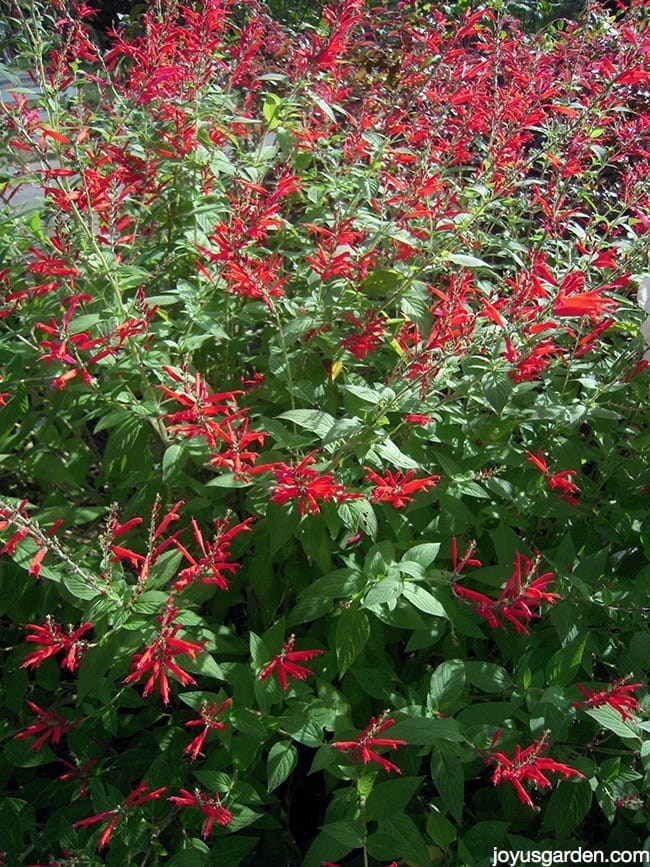
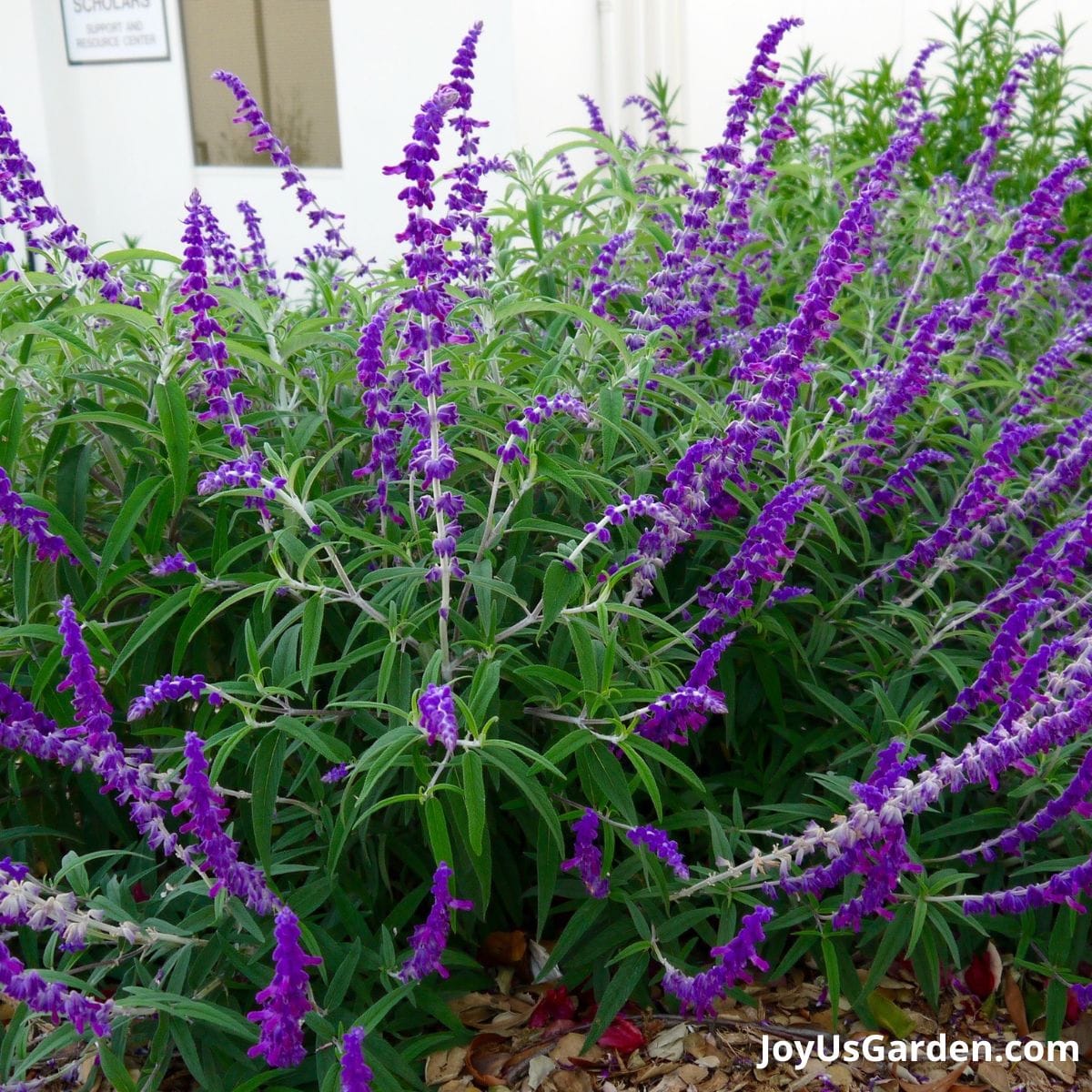
Pruning 3 Types of Salvias
Type #1 The Deciduous Herbaceous Salvias
This category includes the popular Salvia elegans, Salvia guaranitica (including the popular “Black & Blue), Salvia leucantha, Salvia Waverley, Salvia ulignosa, and Salvia patens.
With these salvias, the old growth eventually dies out and fresh new growth emerges from the base of the base. They have softer stems that either die off and/or freeze. These types of salvias are better to prune in spring (in colder climates) because the old growth will protect the fleshy new growth over the winter.
In the video, you’ll see me working on a Salvia leucantha (Mexican Bush Sage), Salvia elegans (Pineapple Sage), and Salvia Waverley. These salvias are very simple to prune.
When these types of Salvias are through flowering, simply cut those stems all the way down to the ground. It needs to be done once or twice a year. They will still flower next season if you don’t, but you’ll get more blooms and the plant will look 100% better if you do.
I lived in Santa Barbara for 10 years where the S. leucantha and the Salvia Waverley get huge. Many of them are not cut back leaving a tangle of dead twisted stems and they look like a 3′ ratty mess. I wanted to prune them back but didn’t want to get arrested for trespassing!
So, it’s best to give them the shearing back they need because this lets in the light and air required for the new stems to grow. That soft new growth that appears at the base is what is going to eventually produce flowers.
Another thing to know is that these salvias (unrelated to this pruning subject) are that they tend to spread as they grow so you might have to do a bit of dividing.
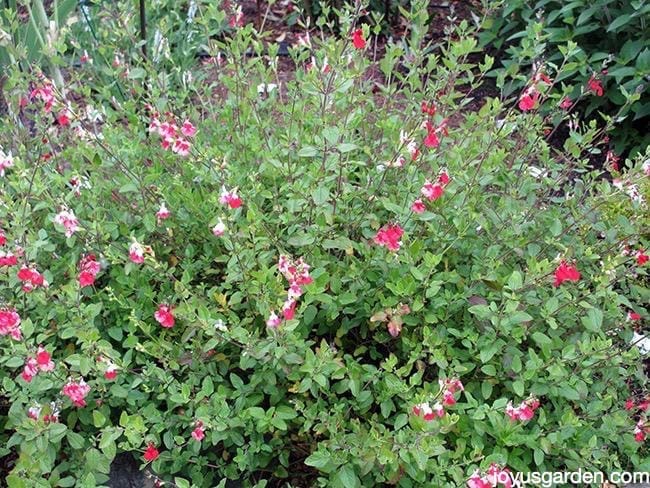
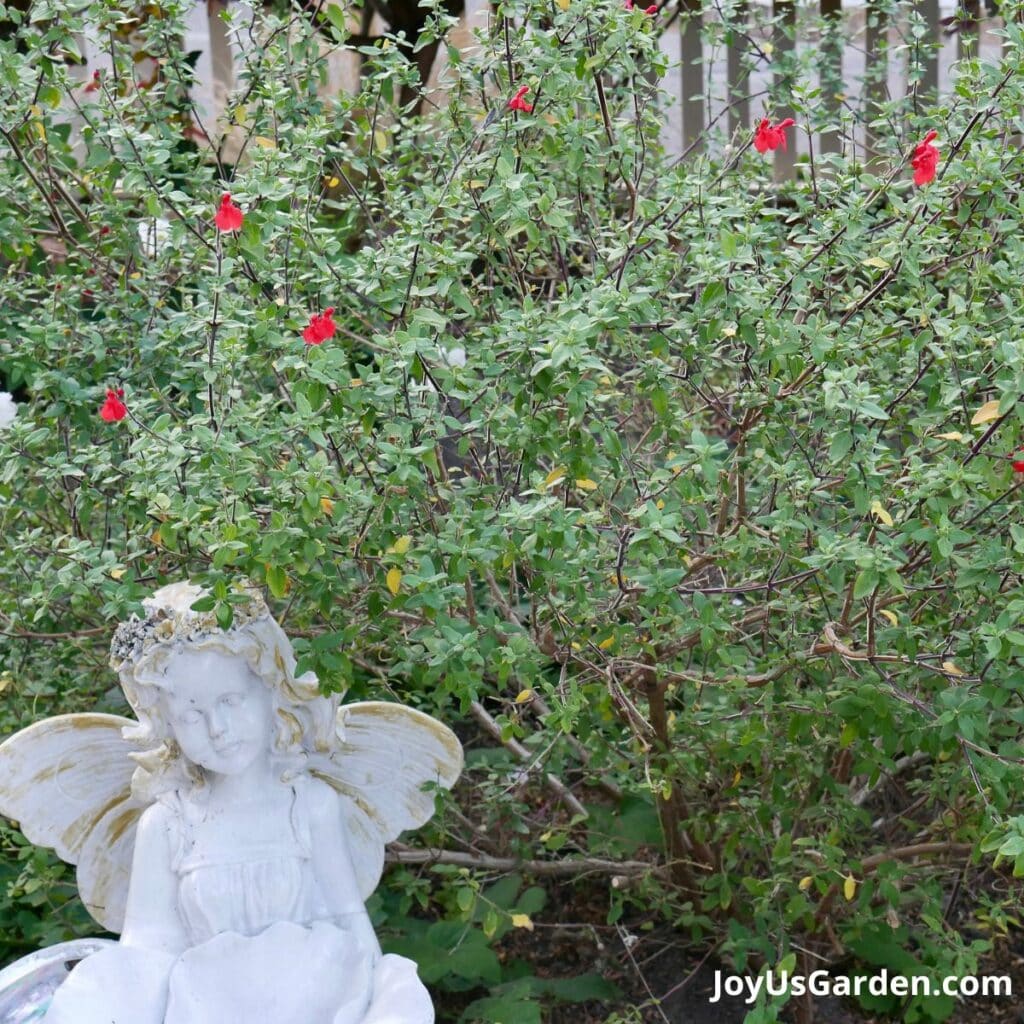
Type #2 The Herbaceous Salvias With Woody Stems
This category includes Salvia greggii (there are so many varieties of this one), Salvia chamaedryoides, Salvia coccinea, Salvia officinalis (the popular cooking sage), and Salvia microphylla (there are quite a few microphyllas too). These are the shrubby salvias.
You prune these salvias back after flowering but not all the way to the ground. Take them back to at least where the first set of foliage starts on the flower stem – this could be a pinch or a cut further down if they need it.
I learned this the hard way when I was first learning about salvias. I cut a very leggy 4′ S. greggii down to 3″ from the ground. It never fully came back. Out it came and into the compost bin, it went. This is why it’s good to know what type of salvia you have before pruning!
With these types of salvias, I thin the stems out in the middle and then shape the plant so it’s pleasing to the eye. They often go through three bloom cycles throughout the year in coastal CA. Yes, it’s a long growing season.
In this more subtropical and Mediterranean climate, I gave them their big pruning in late fall or early winter and lighter ones in late spring and mid-summer.
Be sure to take out any growth which has died over the winter. If you don’t give these salvias some type of pruning, they’ll get extremely woody and won’t repeat bloom like you want them to. They get straggly and sparse fairly quickly – not a pretty sight in the garden.
In my years of working with these types of woody, shrubby salvias I found that some needed to be replaced before or around the five-year mark. Perennials don’t live forever after all.
No worries though because they grow fast. If you purchase and plant a 1-gallon plant in early spring, it’ll be a good size with lots of blooms by the end of the season.
FYI, I inherited three Salvia greggiis when I moved into my prior home in Tucson. I don’t know how old they were and believe they had never been pruned. Two were very woody and never responded to pruning. The third looked a lot better but never flowered abundantly.
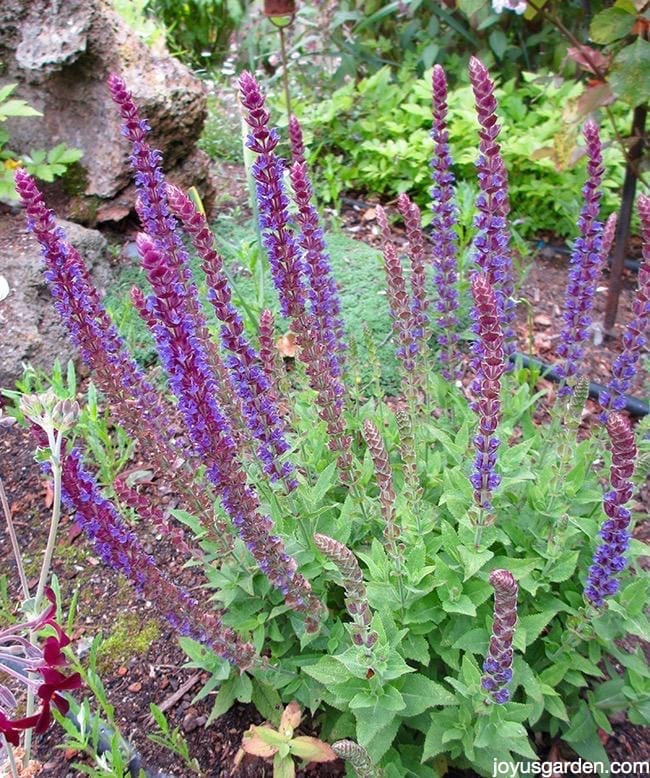
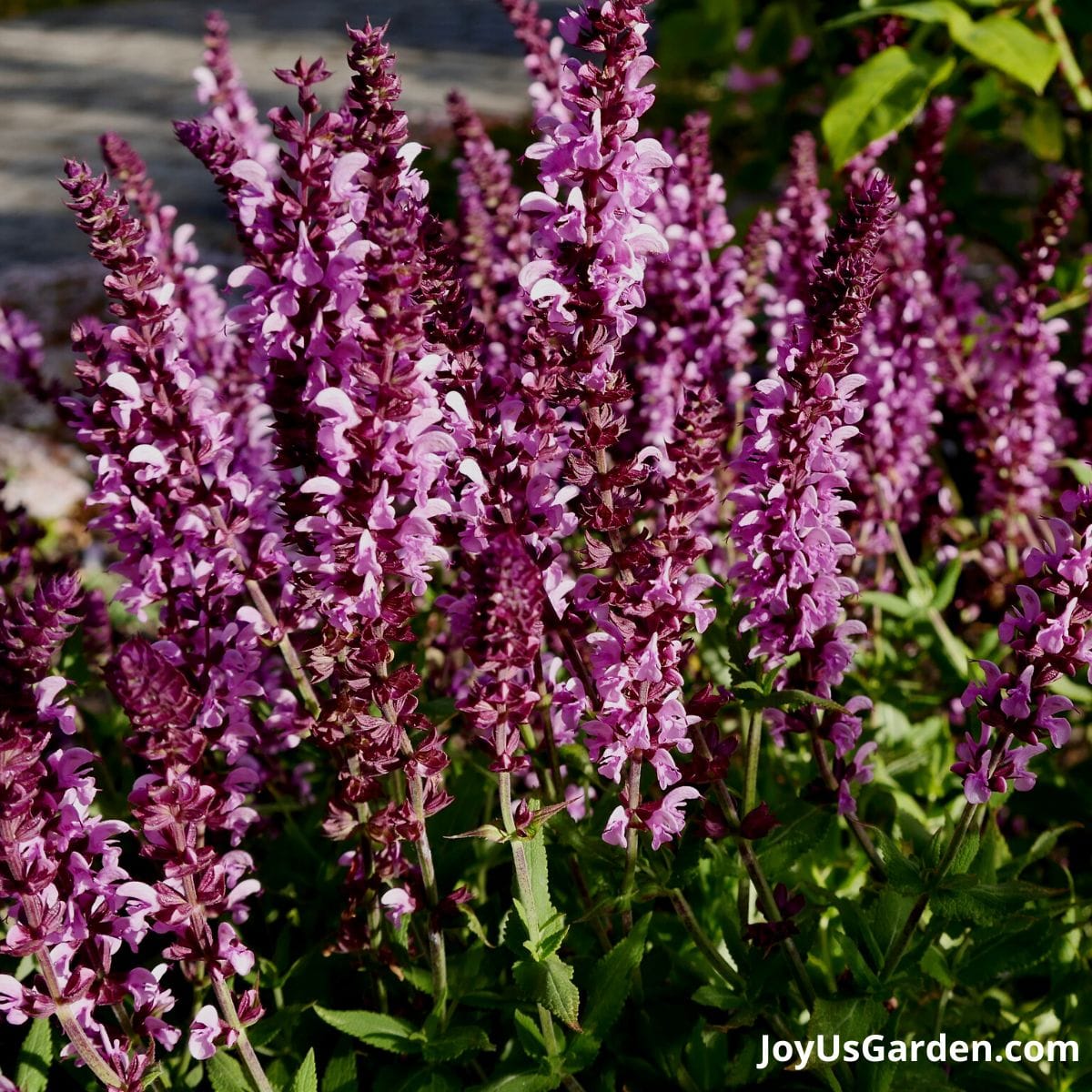
Type #3 The Rosette Forming Herbaceous Salvias
This category includes: Salvia nemorosa, S. x superba and S. penstemonoides.
These salvias form low rosettes and are evergreen in coastal California. The stems produce side stems, and the abundance of flowers emerge out of them.
The one that you see me pruning in the video is Salvia nemorosa (Meadow or Woodland Sage) and I’ve found this one has a very long bloom time and comes in different colors. Since I originally wrote this post 5 years ago, there are many more varieties of this beautiful salvia on the market now.
By the way, The National Garden Bureau named Salvia nemerosa plant of the year in 2019. Quite the honor and rightfully so!
In the fall, I’d prune the stems all the way down to the rosette and clean up any dead foliage growing close to the ground. The leaves tend to grow densely on this 1 so the undergrowth gets smothered. Remove dead foliage in late winter or spring so that fresh new growth can easily emerge.
Salvia Pruning FAQs
During the growing and flowering season, salvias should have spent flowers, spent flower spikes, and /or old stems removed to encourage new flowers to appear.
Depending on the type of salvia you have, pruning and dead-heading will encourage 2 – 4 flushes of flowers. As a professional gardener in coastal California, quite a few of the different varieties of salvias and different species of salvias yielded not only a second flush of flowers but a third also.
How do you prune back salvias?
It depends on the type of salvia and the time of year. Spring and fall are the big prunes for overall shape and health whereas in summer it’s lighter to encourage all those repeat blooms we want.
Yes. As I said above, this is generally a time for lighter pruning to remove dead flowers and keep the plants looking good, and bring on new flowers.
This post is focused on perennial salvias but we’ll give a little attention to the annual salvias which are popular bedding and container plants. They look and flower the best when their spent blooms are deadheaded.
More on pruning salvias in summer
If growing in a suitable climate zone and if pruned properly, yes. I’ve found that the S. greggii varieties along with the S. microphyllas begin getting woody and sparse around the five-year mark so I replace them. Thankfully, they grow fast!
Some can be cut back to the ground. The Mexican Sage (Mexican Bush Sage) can be cut back to the base of the plant as can the Salvia nemerosas. Both have softer stems.
This isn’t the case with the woody salvias. Know what type of salvia you have before cutting it all the way back.
In climates with cold winters, late summer is the best time well before the first frosts. In warmer climates, I did it in late autumn.
It depends on your climate zone. If in a cold climate, do a light deadheading late in the growing season and a bigger prune in spring after the temperatures have warmed.
Some get cut all the way back, and some get cut partially back. No matter what zone you’re gardening in, it’s best to do a little research to determine what type of salvia you have before you embark on a pruning adventure!

The Bottom Line
There are so many species and varieties of salvia on the market and new ones are being introduced each year. It’s best to know which kind of salvia you have before springing into action with the pruners.
All 3 types of perennial salvias really benefit from a good haircut, some more extensive than others. You’ll get much better flowering and shape if you give them one.
Whether you prune in fall or spring is up to you and the climate zone you live in. Just keep those salvia blooms coming please – the hummingbirds, butterflies, and bees will agree!
Happy Gardening,

Other Helpful Gardening Guides:
- Pruning 2 Different Types Of Lantana In Spring
- How To Aesthetically Prune A Tropical Hibiscus In Spring
- Essential Gardening Tools You Can Buy On Amazon
- Pruning A Star Of Jasmine Vine
- Pruning An Oregano Plant
This post may contain affiliate links, you can read our policies here.
- About the Author
- Latest Posts
Nell, the founder of Joy Us garden, was born into a gardening family and grew up in Connecticut’s countryside. After living in Boston, New York, San Francisco, & Santa Barbara, she now calls the Arizona desert home. She studied horticulture & garden design, working in the field all her life. Nell is a gardener, designer, blogger, Youtube creator, & author. She’s been gardening for a very long time & wants to share what she’s learned with you.

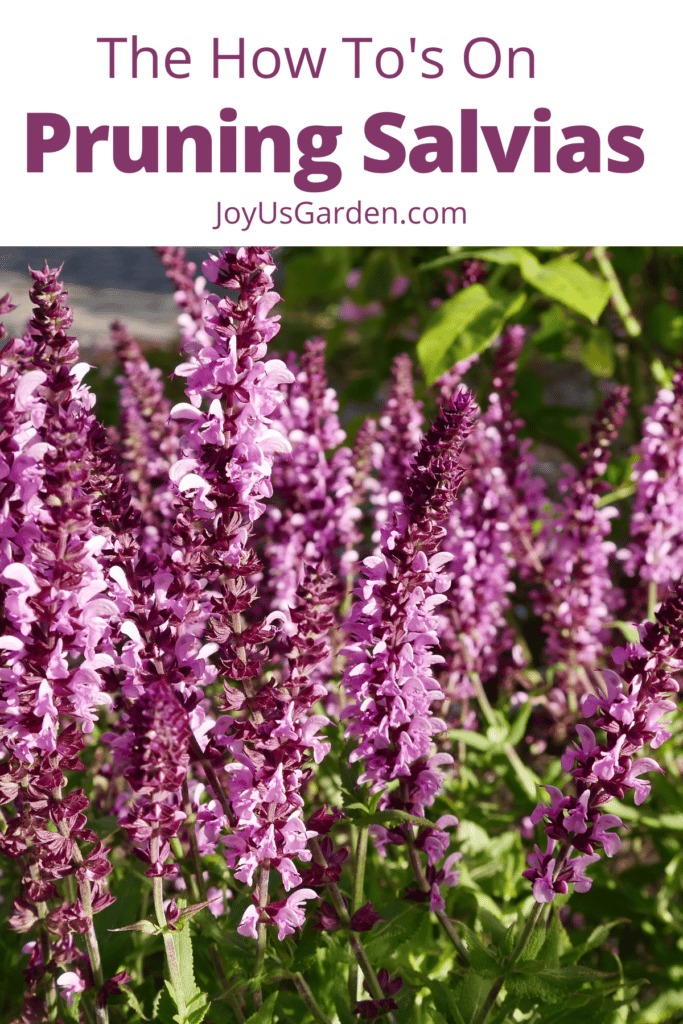


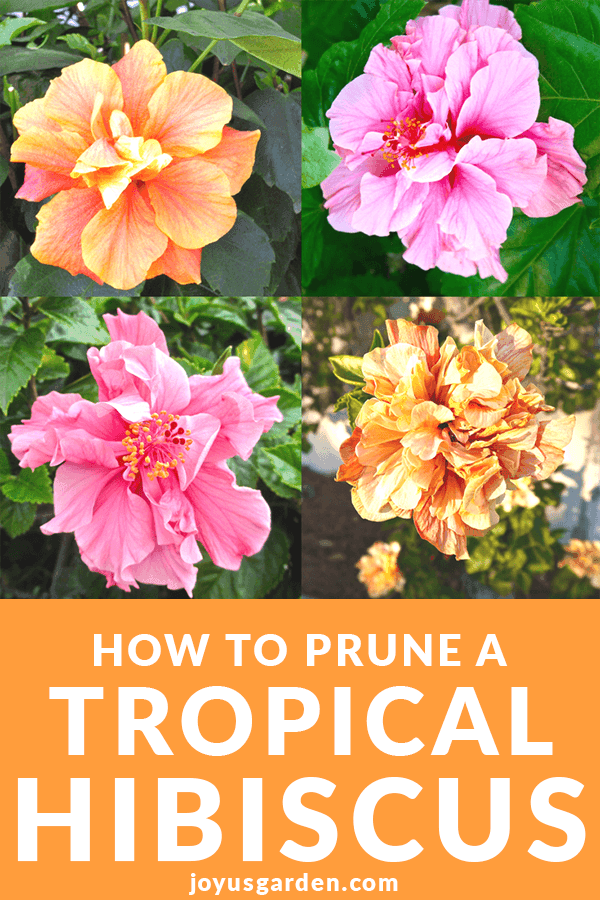
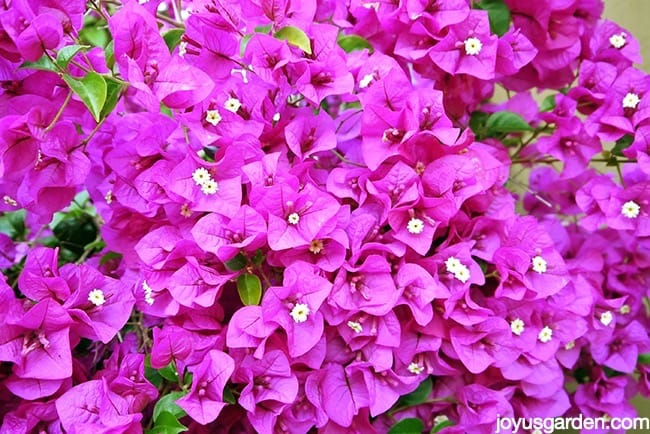
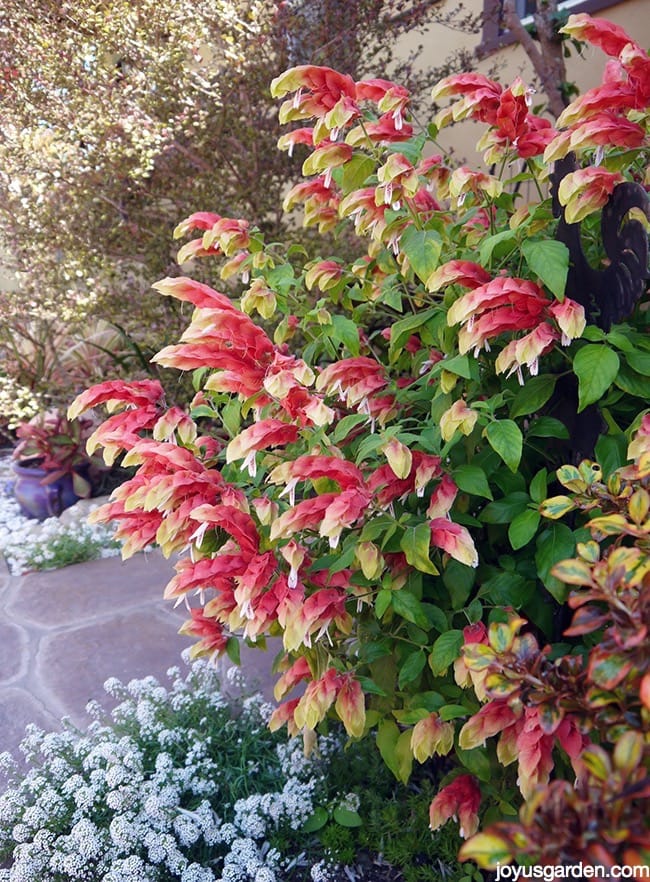
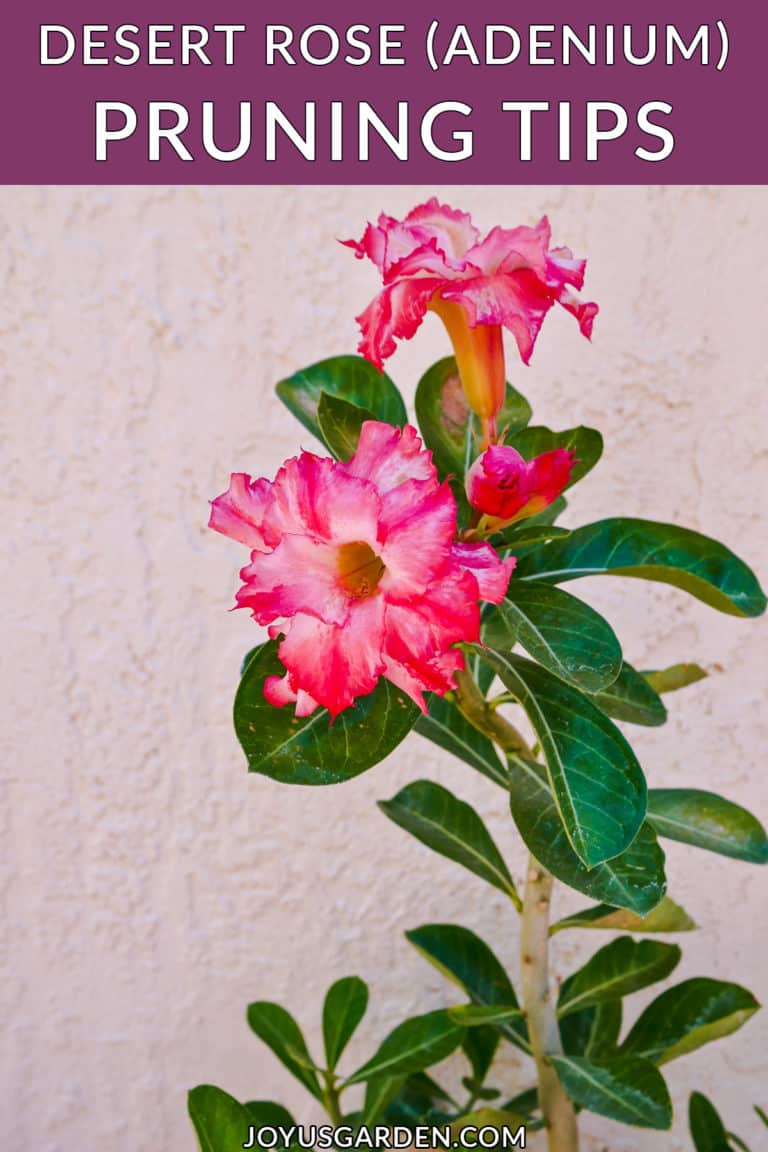

Hi Barbara – I love salvias too! Yes, they do best with an annual pruning & deadheading as needed through the season. Nell
Hi there. I’m a first time gardener and I just planted salvia nemrosa (I know I messed up that spelling) they were a pretty light blue/purple and now the colouring has all fallen off. Do I prune them now or wait til fall?
Thank you so very much
Lee-Ann
Lee-Ann – You can do the big pruning in spring or fall. It’s best to dead-head them throughout the season. Nell
Hi. I’ve read your post and viewed your video. I’m uncertain what class my salvia belong to. I’ve planted: Salvia munzii, salvia brandegei (santa rosa), and Salvia “Dara’s Choice”.
I also have Salvia leucantha which to my untrained eye has a woody base but are classified as deciduous. Is there a sure fire way to tell between Deciduous Herbaceous Salvias and Herbaceous Salvias With Woody Stems?
Thanks! I’m in the SF area if that makes a difference.
Maria – I lived in SF for 20 years. Salvia leucantha is quite commonly planted & is deciduous. Cut it back to make room for fresh growth. There are 100’s of salvias. If I don’t know what type the salvia is, I research to find out what type it is. Most of the herbaceous woody salvias do best with a light pruning. Nell